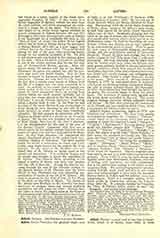

Alfieri, COUNT VITTORIO, the greatest tragic poet of Italy; b. at Asti (Piedmont), January 17, 1749; d. at Florence, October 8, 1803. He was the son of Count Antonio Alfieri and Monica Maillard de Tournon. His training (1758-66) at the Regia Academia of Turin, where, owing to his father’s early death, he had been placed by his uncle, Count Benedetto Alfieri, bore no fruit. Recklessly plunging into the world at the age of sixteen, the uncontrolled master of a considerable fortune, after a short service in the Piedmontese army, he took to travelling all over Europe without any definite aim in view, urged on by an overwhelming spirit of unrest. Thus he spent his best years in disreputable intrigues, profitless roving, and the promiscuous reading of unworthy literature. French he knew well enough, but of his native tongue he had little more than a colloquial smattering. His real education was to begin soon after his twenty-ninth year, when his hitherto dormant genius suddenly kindled in him an indomitable literary ambition, which first caused him to delve into Italian, then into Latin, and, nineteen years later, into Greek with sturdy courage and unflagging perseverance. Italy lacked a tragic literature worthy of the name. Alfieri created it. Having settled at. Florence in 1778, he contracted there an intimacy with Louisa von Stolberg-Gedern, Countess of Albany, the wife of Charles Edward Stuart, the Pretender. In 1792, when debauchery had brought the latter to his grave, the Countess began to share the poet’s home. The criticisms of society were ignored and the lovers lived unwedded to the end. The poet’s religious feelings, however, always appeared strong and sincere. He died after receiving the sacraments of the Church and was buried in Santa Croce, where a monument by Canova marks his grave.
Alfieri’s literary production, begun in 1778, was laborious and voluminous. His fame rests mainly on twenty-two tragedies, viz.: “Filippo,” “Polinice,”—both based on an extremely weird plot and exhibiting at times the beginner’s hand; “Antigone,” “Virginia,” “Agamennone,” showing greater poetic finish and maturer artistic skill; “Oreste,” “Rosmunda,” “Ottavia,” “Timoleone,” “Merope,”—in which the author is at his best; “Maria Stuarda,” a little below the standard previously set; “La Congiura dei Pazzi,” full of vigor and poetic impetus; “Don Garzia,” “Saul,” this being his masterpiece; “Agide,” “Sofonisba,” “Bruto Primo,” “Mirra,” rich in striking effects; “Bruto Secondo,” “Abele,” “Alceste Seconda,” and “Antonio e Cleopatra,” which closed his repertoire. Alfieri’s tragedies have been said to be cast in a form often constrained and pedantic. Even if this be true, the fault almost disappears when their forcefulness, freshness, sincerity of feeling, and inspiration are fully appreciated. Nor is the poet’s fame waning in the hearts of contemporary Italy. His unrelenting hatred of tyranny, ringing through every word and line, is now more than ever acknowledged to have been the strongest literary factor in Italy‘s fight for political unity and independence. There is a complete edition of Alfieri’s works in twenty-two volumes, by Capurro (Pisa, 1805-15). It contains, besides the tragedies, the “Vita di Vittorio Alfieri, scritta da esso,” the “Misogallo,” and sundry minor writings.
EDOARDO SAN GIOVANNI

